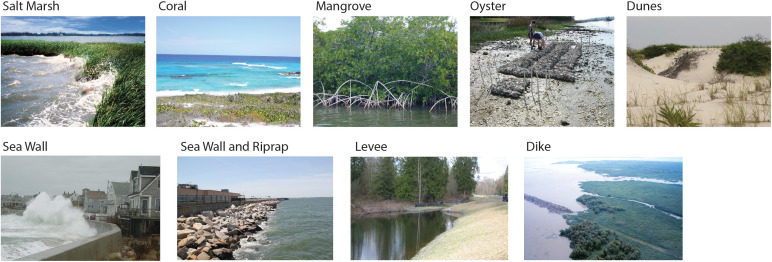Coastal resilience wins the #ESA2016 Innovation in Sustainability Science Award
Innovation in Sustainability Science Award honors Ariana E. Sutton-Grier, Kateryna Wowk, and Holly A. Bamford.

Ariana Sutton-Grier at the Smithsonian Environmental Research Center on Chesapeake Bay (SERC), where she was a postdoctoral fellow in 2008-10. She is currently research faculty at the University of Maryland in the Earth System Science Interdisciplinary Center (ESSIC) and ecosystem science adviser for the National Ocean Service at the National Oceanic and Atmospheric Administration (NOAA).
The Innovation in Sustainability Science Award recognizes the authors of a peer-reviewed paper published in the past five years exemplifying leading-edge work on solution pathways to sustainability challenges.
In the United States, Hurricane Sandy brought unprecedented attention to building resilience of coastal communities and ecosystems to the growing threats of storm surge and erosion. This has led to a focus on how both “natural infrastructure” and “hybrid infrastructure” that incorporates both natural and engineered features, can increase coastal protection.

Katya Wowk, a consulting social scientist for NOAA at the time of the study, is now senior associate for strategic planning and policy at Harte Research Institute for Gulf of Mexico Studies in Corpus Cristi, Texas.
Drs. Sutton-Grier, Wowk, and Bamford provide an exemplary example of how the integration of ecological and social science can inform and increase the sustainable management of coastal ecosystems worldwide in a review of “The future of our coasts” in the journal Environmental Science & Policy. They synthesize available socio-environmental science about natural and hybrid infrastructure, including an analysis of the state of the U.S. policy landscape for coastal resilience, and laying out the key policy opportunities and the challenges to implementing natural and hybrid approaches. Their analysis is placed in a real-world context that highlights the importance of their own research and that of others related to natural and hybrid infrastructure. The paper has reached a wide-audience and promoted discussions about coastal resilience and sustainable management among a wide range of stakeholders including engineers, policy makers and coastal businesses.

Holly Bamford is chief conservation officer at the National Fish and Wildlife Foundation. At the time of the study, she was acting assistant secretary for conservation and management at NOAA.
Ariana E. Sutton-Grier, Kateryna Wowk, and Holly A. Bamford. (2015) Future of our coasts: The potential for natural and hybrid infrastructure to enhance the resilience of our coastal communities, economies and ecosystems. Environmental Science & Policy 51: 137–148 DOI:10.1016/j.envsci.2015.04.006
ESA will present the 2016 awards during the 2016 Annual Meeting in Fort Lauderdale, Fl. The awards ceremony will take place on Monday, August 8, at 8 AM in the Floridian Ballroom AB, Greater Fort Lauderdale/Broward County Convention Center.
Read about all of the 2016 award winners in the awards master post.

Examples of natural (top row) and built (bottom row) coasts from figure 1 of Sutton-Grier and colleagues’ award winning paper in Environmental Science & Policy. Photo Credits: NOAA for all images except Dunes (credit: American Green), Sea Wall (credit: University of Hawaii Sea Grant), and Levee (credit: J. Lehto, NOAA)